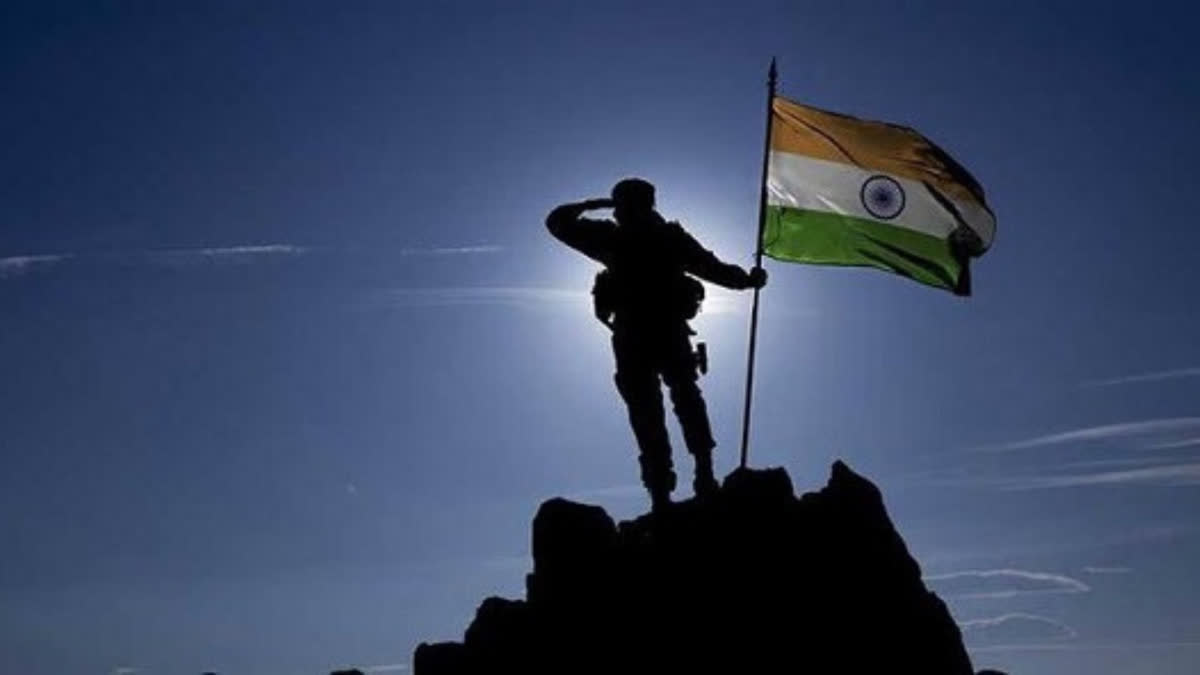Hyderabad: As the nation observes the 25 years of Kargil Vijay Diwas to celebrate the victory over Pakistan and pay tribute to the soldiers for recapturing the Tiger Hill and other peaks, here is a brief on how the soldiers of the rival nation intruded into the Indian territory.
The operation was initiated at the end of November 1998, before the Lahore summit.
In August-September, 1998 Pakistan-India talks on Siachen had ended in deadlock.
In October, 1998 Prime Minister Nawaz Sharif appointed Musharraf as the army chief.
Area and posts occupied by the Pakistanis
Pakistanis intruded into Mushkoh, Dras, Kargil, Batalik and Turtuk sub-sectors, between Zojila and Leh. They crossed the LoC and intruded 4-10 km into Indian territory and occupied 130 winter-vacated Indian posts. They crossed the LoC and intruded 4-10 km into Indian territory and occupied 130 winter-vacated Indian posts.
The infiltration plan
The tactical plan the plan was a well conceived and came as a total surprise to the Indian army.
The initial phase of Pakistani operations involved a two pronged intrusion into heights in the Dras- Mushkoh valley and along the Batalik- -Yaldor- Chorbatla and turtok axis.
The Dras and Mushkoh valley was the closest from the LC and Pakistani troops has occupied dominating heights in this region.
Posts established in Muskoh were to be used as a firm base and a launch pad for infiltration into Kashmir valley ,Kishtwar- Bhaderwah and neighbouring areas of Himachal Pradesh.
In the Batalik -Yaldor sector,Pakistani troops were to occupy tactical heights dominating the Indus river so as to Isolate this sector from Leh.
The occupation of posts along the Chorbatla Turtok axis was to facilitate capture of Turtok and subvert the local population to initiate militancy in this area.
Subsequent phase of the operation was to be more ambitious , in which intrusion in Drass- Mushkoh-Kaksar sectors were to be linked up, thereby achieving substantial gains of territory and totally cutting the srinagar -Leh highway.
The early intrusions were carried out by troops available with the FCNA (Force Command Northern areas) thus ensuring the minimum number of troops inducted for the operations from other areas.
Battalions from outside of FCNA were moved into the intrusion area as reinforcements at a later stage after the Northern light infantry battalions suffered heavy causalities
Since the artillery build up is a giveaway and a good indicator of an impending operation, Pakistan had cleverly built up adequate artillery over a period of time on the pretext of trans-LC firing
Surprise was also achieved by good radio discipline and use of line communications as far as feasible. When communications were made there were intercepted by Indians but were in several dialects for which ,we did not have interpreters.
Battalions involved
In the Drass -Mushkoh sectors ,Five NLI battalions were employed for the intrusion and a Frontier Force battalion was inducted later after the opening up of the road on Pakistan side of LC.
In terms of sheer numbers as well as give the operation the face of jihad ,these battalions were adequately augmented and grouped with militants from various tanzims and possibly deployed as porters and for manning radio communications.
The fire support: 10 to 11 fire units were brought into the theatre over and above the 22 fire units which were already deployed in the area.
The ground support weapons ,there was a plethora of weapons deployed, ranging from small arms , air defence weapons including ground to air shoulder fired missiles .medium and heavy machine guns ,mortars and rocket launchers.
The helicopters were used by Pakistan for reconnaissance ,reinforcements and replenishments .
Pakistani units and formations appropriately supported by their scout units and special service groups were full prepared for the operation.



